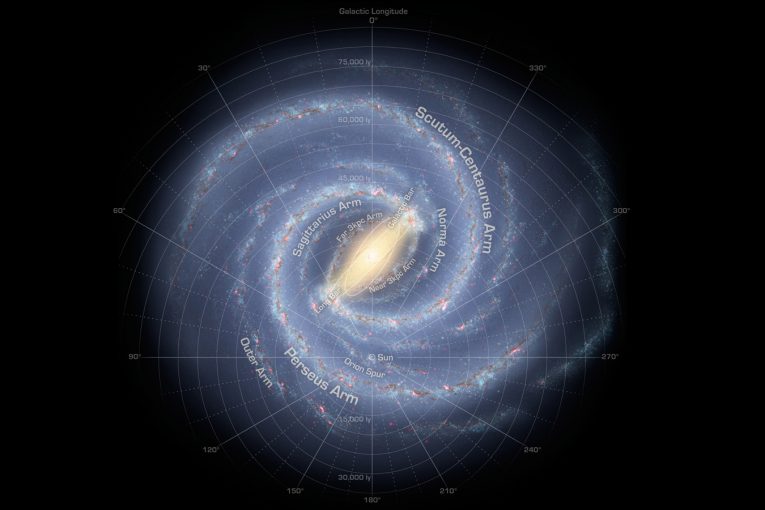

By Jose Orozco
October has been a month of celebrating stars and black holes in our galaxy. Yinuo Han, an honor student from the University of Sydney, has worked to model a Wolf-Rayet star system known as Apep. Along with that, three scientists were also awarded the Nobel Prize in Physics based on groundbreaking research that has expanded our understanding of black holes.
What we should take from this is to better appreciate our universe. There should be no existential anxiety or dread; instead, there should be a deluge of resolve since discovery correlates to the expansion of human knowledge.
First discovered in 2018, the Wolf-Rayet star system called Apep was found to be in our Milky Way. As CNN reports, “The star system, which looks like a cosmic pinwheel, is located 8,000 light-years from Earth.”
“Apep [is called] after the serpentine Egyptian god of chaos.”
The chaos alluded here comes from the random, expanding dust spiral that is made by the binary stars.
The recent October 2020 publication, as related by The University of Sydney, reveals “Apep’s bizarre physics with unprecedented detail.”
Now, what exactly is special about these stars?
Well, Universe Today explains: “Wolf-Rayet stars represent a final burst of activity before a huge star begins to die.” And these stars are 20 times more massive than our sun when reaching their penultimate stage, a phase occurring before the supernova.
A supernova is a stellar explosion that gives birth to the formation of a black hole.
So, Wolf-Rayet stars are very rare and it happens to be that our galaxy contains a binary pair of these stars.
This is truly amazing! It has also been reported that the two stars are 10 to 15 times larger than our sun with extreme surface temperatures of 45,032℉. In comparison, our sun only reaches a surface temperature of 9,941℉.
“Now, astronomers have learned more about this rare gem,” CNN reports, “including that the massive stars complete an orbit of each other about every 125 Earth years, and at a distance that is comparable to the size of our solar system.”
This makes one truly reconsider our position on Earth as compared to these massive celestial entities in our expanding universe.
The Cosmic Companion reports: “A new study reveals this system could erupt as the first gamma ray burst ever seen in our home galaxy.”
“Gamma ray bursts release more energy in 10 seconds than the Sun will emit over its entire 10-billion-year lifetime.”
This relevancy is uncanny as a gamma ray burst could deplete our ozone layers and drastically affect all life on earth. It could then increase the amount of acid rain and potentially even lead to mass extinction.
These predictions are based on a previous event: “Studies suggest the Ordovician–Silurian extinction, the second-largest loss of life in the history of Earth, may have been the result of such a gamma ray burst.”
This would definitely be something to worry about! But since it will occur from afar, 8,000 light-years away to be specific, we can only safely witness the event.
In retrospect though, this can make anyone be inclined to feel slightly existential. After I heard this, I began to compare my everyday problems with the problems that exist in space.
Now, notwithstanding these potential cosmic dangers, I was surprisingly not anxious or filled with dread, and I would argue to avoid those states of mind.
Knowing that these stars will become black holes filled me with awe. It reminded me to be amazed by how resilient life is on Earth.
Consequently, the 2020 Nobel Prize in physics was awarded to three scientists for their notable work on black holes.
The New York Times enumerated the prize winners: “The prize was awarded half to Roger Penrose for showing how black holes could form and half to Reinhard Genzel and Andrea Ghez for discovering a supermassive object at the Milky Way’s center.”
The research based on this supermassive black hole existing at the center of the Milky Way is particularly interesting!
The journal, the Conversation, elaborates on the contribution: “Genzhel and Ghez used the world’s largest telescopes (Keck Observatory and the Very Large Telescope) and studied the movement of stars in a region called Sagittarius A* at the center of our galaxy.”
By analyzing the stellar orbits, they were both able to independently figure out that a supermassive black hole was pulling on the stars.
And to put this into perspective with the star system, Apep, the supermassive black hole is “4 million times more massive than our Sun.”
This is mind-blowing! This brings new questions as to whether all solar systems have a black hole at their centers.
Do black holes contribute to the formation of galaxies?
These noteworthy discoveries are making our lives even more bizarre as this adds to our constant state of uncertainty.
An analogy to existence is that of the Heisenberg Uncertainty Principle; we cannot exactly measure both where we are in life and how fast an event in life is directed towards us.
We have to accept uncertainty and learn to appreciate our time and place in this world called Earth.
Support our work – to become a sustaining at $5 – $10- $25 per month hit the link:
